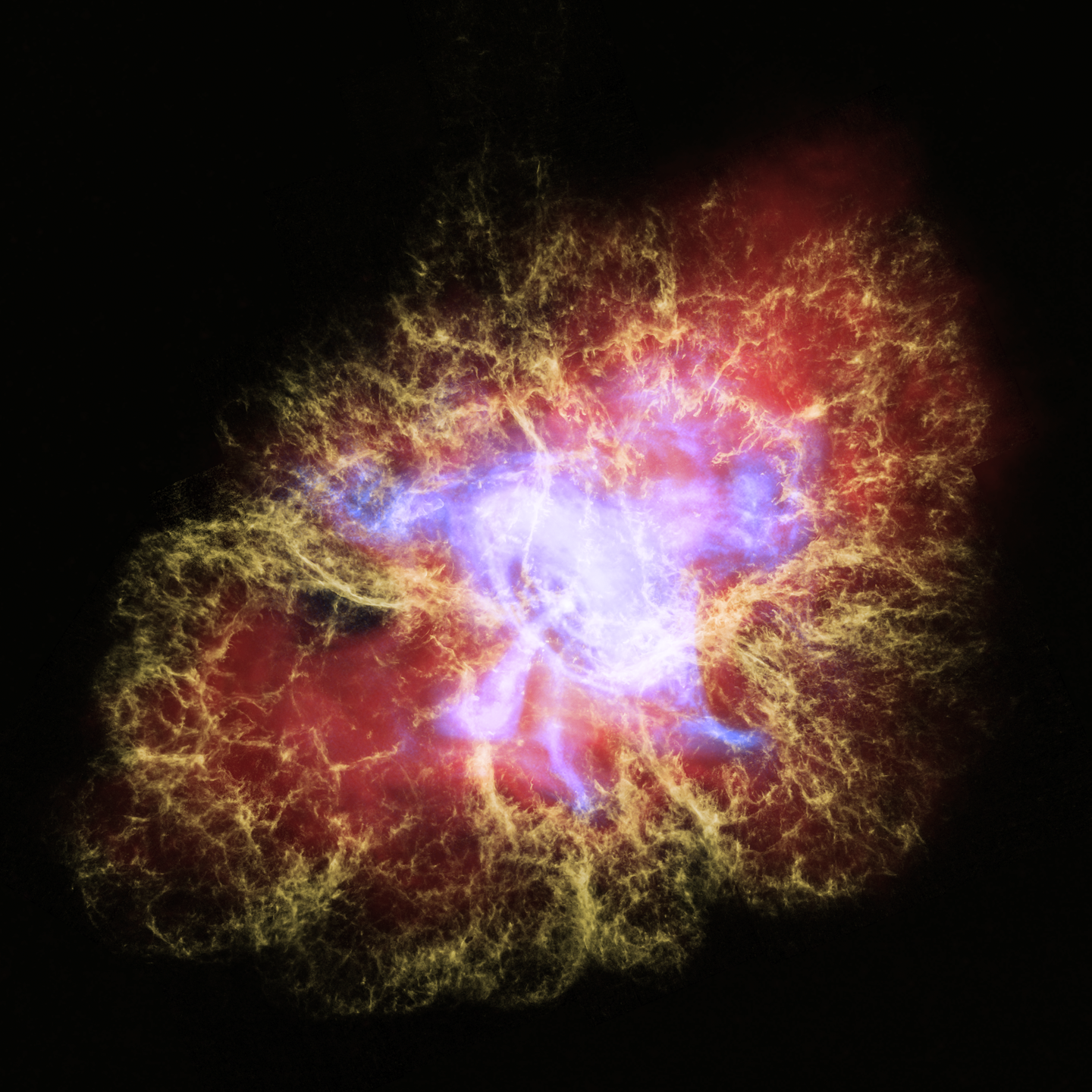NASA’s top observatories teamed up to capture an imploding star in captivating 3D
The image provides new insight into the stellar object’s identity.

In the National Basketball Association, teams really only succeed if they have a “big three”: a trio of powerhouse players that propels their squad to the finals. There was Lebron James, Chris Bosh, and Dwayne Wade on the Miami Heat; Klay Thompson, Steph Curry, and Draymond Green on the Golden State Warriors; and, of course, Michael Jordan, Scottie Pippen, and Dennis Rodman on the Chicago Bulls.
And now, it turns out NASA also has a big three: the Chandra X-ray Observatory, and the Hubble and Spitzer space telescopes. Known collectively as the “Great Observatories,” they recently combined data to craft a three-dimensional image of the Crab Nebula just as dazzling as any NBA championship ring.
Researchers used 2D images from the Great Observatories to create this interpretation of the nebula: Chandra supplied the x-rays, Hubble the optical light, and Spitzer the infrared light. By closely studying these varying wavelengths and better understanding how they nest within one another, teams from the Space Telescope Science Institute in Maryland, the Caltech/IPAC in California, and the Center for Astrophysics in Massachusetts were able to piece things together in three dimensions. You can see the complete result in the accompanying video they created. The image will debut at the American Astronomical Society meeting this week in Honolulu, Hawaii.
“Seeing two-dimensional images of an object, especially of a complex structure like the Crab Nebula, doesn’t give you a good idea of its three-dimensional nature,” Space Telescope Science Institute visualization scientist Frank Summers said in a press release. “With this scientific interpretation, we want to help people understand the Crab Nebula’s nested and interconnected geometry. The interplay of the multiwavelength observations illuminate all of these structures. Without combining X-ray, infrared, and visible light, you don’t get the full picture.”
The stunning new visualization provides a new perspective on a stellar object we’ve been observing for centuries. Back in the year 1054, Chinese astronomers made note of what they thought was a new star, which at the time shone six times brighter than Venus. Native Americans, too, recorded evidence of this in petroglyphs. But they weren’t witnessing the birth of a new star—rather, the death of an old one. It was a supernova so bright that it was visible in the daytime for a month.
The dying star emanated with energy, lighting up surrounding gases to create a nebula: huge interstellar pockets of gas and dust. Though some nebulae form when living stars energize their contents, others, like this one, appear during star deaths, and are known as supernova remnants. When Anglo-Irish astronomer Lord Rosse spotted this one in 1844, he named it the Crab Nebula for its tentacle-like tendrils.
Now, in 2020, we have even more insight. The 3D image reveals that the Crab Nebula—which you can spot in the constellation Taurus—is not a classic supernova remnant where one big blast wave heats gases to millions of degrees. It’s actually a pulsar wind nebula, which burns a little cooler but still packs a punch. Essentially, it consists of a neutron star, which is the hyper-compacted, super dense core of the star that died in 1054. This core blasts out radiation pulses 30 times a second in a very precise manner, which in turn energizes the surrounding gasses and lights them up into what we see as the Crab Nebula.
NASA’s Universe of Learning program, which helped produce the image, hopes that it will help connect the general public to ongoing missions and improve scientific interest and literacy. The program has already made the Crab Nebula video available to museums and planetariums around the world. With any luck, many more people will soon realize just how powerful Big Threes like Chandra, Hubble, and Spitzer truly are.